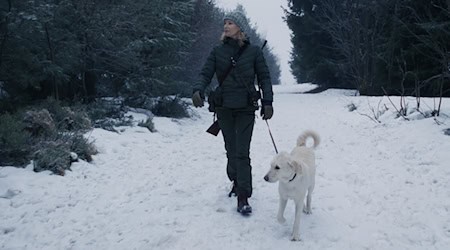The little man with the goatee and pointed cap is Germany's longest-serving character on children's television. The favorite of millions of children "born" in the GDR is still active, although his original employer no longer exists. He survived the fall of the Berlin Wall and outlived his colleague from the West by decades. He has sent generations of children to bed with his dream sand.
Now the 24-centimetre-tall TV star is reaching the traditional retirement age - without retiring. The Sandman turns 65 today.
It all began on November 22, 1959 at 6.55 pm in the television studios in Berlin-Adlershof. Ten years after the founding of the GDR, the Sandman appeared on television there for the first time. Still in black and white. The premiere was a great success from the point of view of the socialist state: there was also a West German Sandman, but he only appeared for the first time eight days later.
The East German television producers had caught wind of the project in the West and wanted to be quicker. And GDR children immediately took the character to their hearts: because the Sandman himself was tired at the end of the first broadcast and fell asleep in the snow, many boys and girls wrote to him offering their own beds.
Fairy tale character Ole Augenschließer is the model
Unmovable googly eyes, pointed cap, little coat and sandbag: animator Gerhard Behrendt developed the little character based on Hans Christian Andersen's fairy tale character "Ole Lukøje" (Ole Augenschließer). In contrast to the West Sandman and Ole, the East Sandman was given a beard that reminded viewers at the time a little of that of former SED leader Walter Ulbricht.
The daily show "Abendgruß", in color since the mid-60s, became a fixed bedtime ritual for many children. It always begins with this song: "Sandman, dear Sandman, it's not time yet. We'll see the evening greeting before every child has to go to bed, you certainly still have time!". Then a short story is shown - the evening greeting.
Particularly popular for decades: The stories from the fairytale forest about Mr. Fox and Mrs. Magpie, Pittiplatsch and Schnatterinchen. After the fall of the Berlin Wall, for example, the boy Kalli and the penguins of the super-cool South Pole gang were added.
The Sandman has a huge fleet of vehicles and goes almost everywhere: across the oceans, to the moon and to fairyland. Of course, he was once happy to travel in socialist brother countries, for example by hydrofoil in Budapest or on a sleigh in Krakow. He was also a guest of the GDR border troops or the pioneer holiday camp. But before the fall of the Wall, the Sandman also visited places that were inaccessible to the "average citizen" of the GDR, such as Vietnam, Cuba, Egypt, Iraq and Japan.
The East German Sandman remained
Then the Wall came down. On December 31, 1991, the former state broadcaster of the GDR was finally history. But the evening greeting with the Sandman survived as one of very few GDR TV programs - on KiKa, Rundfunk Berlin-Brandenburg (rbb) and MDR. The regional broadcasters in West Germany had gradually abolished the West Sandman by 1989.
After 1991, new Sandman frame stories were produced again and again. Eight more new episodes were produced for this year's half-century anniversary, as announced by rbb, the leading broadcaster.
At the start of the European Football Championships, for example, the always friendly little man visited children on a football pitch - and kicked a ball around with them. Other new episodes take him paddleboarding to Scandinavia or on tour with a snow groomer. Around three to four weeks of production time are needed for a 3.5-minute film.
The design of the Sandman puppet hasn't changed much over the past 65 years: "Since the mid-1960s, it has looked more or less the same as it does today. In the early years, it didn't have the typical childish facial features," Nina Paysen, rbb editor for "Unser Sandmännchen", told dpa.
The current puppet has become a little softer in its facial features and the beard is a little shorter, with slightly longer hair at the back. Characteristic features are still the red pointed cap, the red coat and the bag with the dream sand.
He is part of the bedtime ritual for many children
According to rbb, around one million young and old people watch the Sandman every evening on one of the three TV channels or on the digital platforms. On platforms such as ARD Mediathek or the Sandman YouTube channel, the episodes are also primarily viewed in the evening at around 7 p.m., reports Paysen.
In the viewer mail to the broadcasters, it is repeatedly described that the Sandman is an evening ritual - and an indispensable part of everyday family life.
Copyright 2024, dpa (www.dpa.de). All rights reserved










